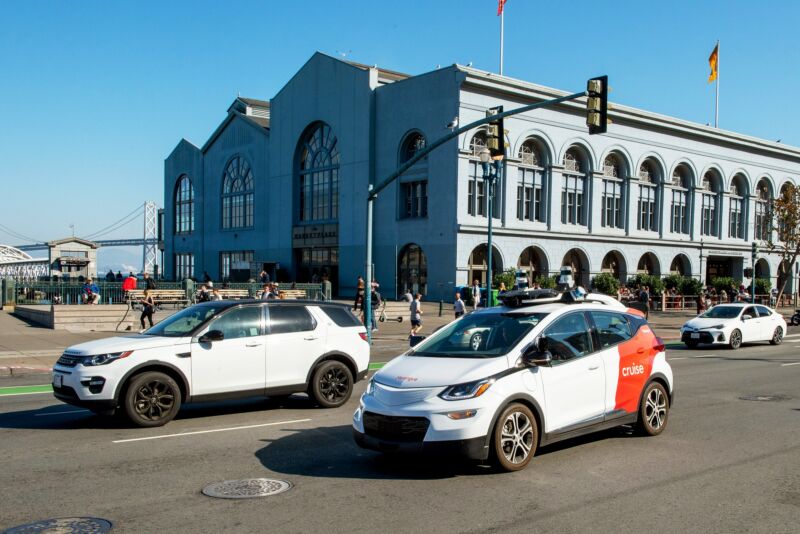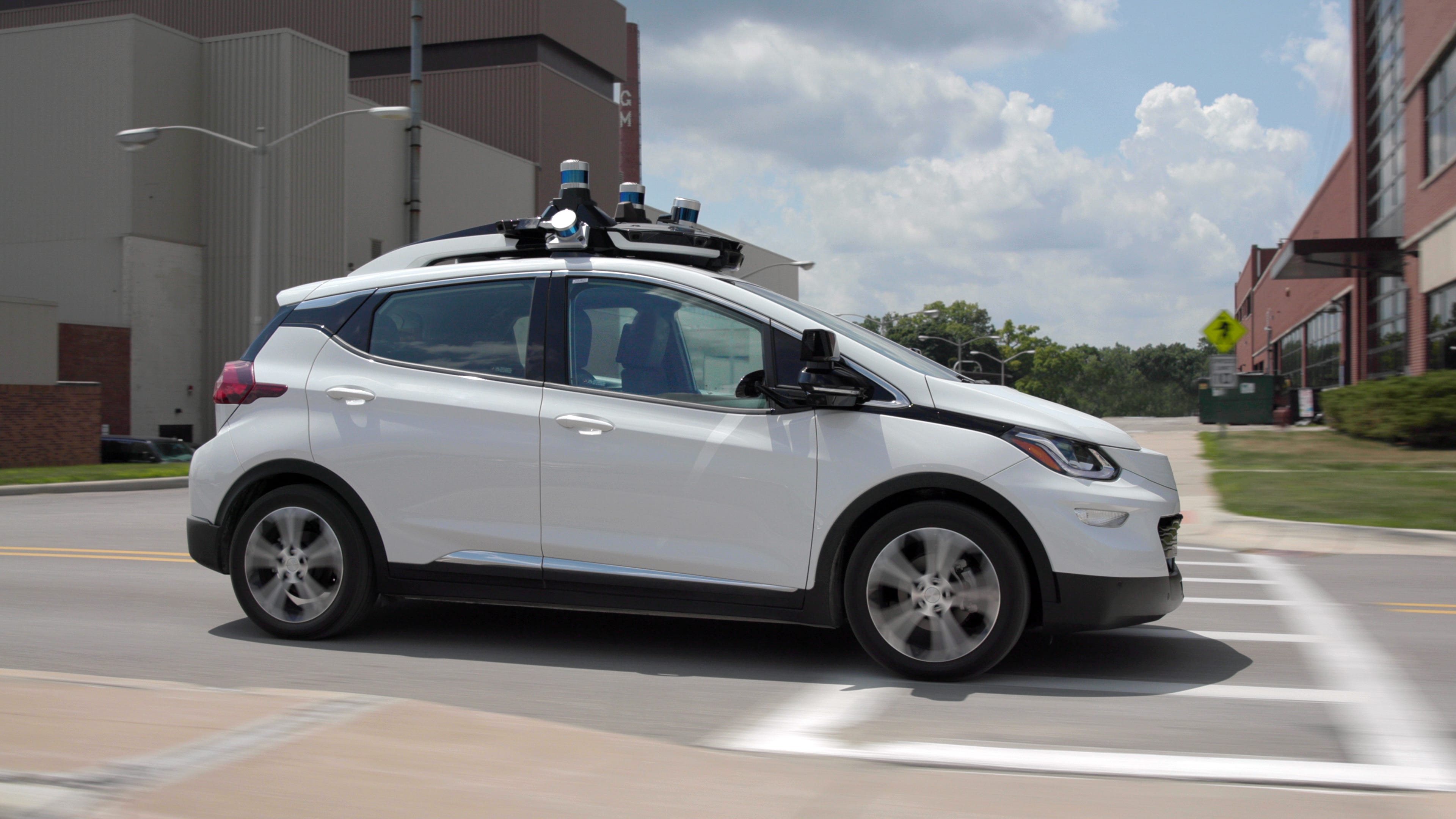Table Of Content

And the company’s “Cruise — Driverless Rides” iOS app is now available in the Apple App store via an invite code to riders who have previously signed up for the public waitlist. Cruise recalled all of its vehicles earlier this year for a software update in late March after one rear-ended a city bus in San Francisco. The crash caused no injuries and the autonomous car was traveling about 10 mph at the time, according to Cruise.
Cruise set to start driverless ride-hailing service in Houston
But the limits are part of a plan by regulators and the company to prove out the safety and efficacy of its system before deploying it in more locations at additional times. The new operating window already extends its total active time by 1.5 hours as compared to the free driverless test pilot service it was offering between June of last year and the debut of this paid service. The permit, issued by the California Public Utilities Commission as part of its driverless pilot program, is one of several regulatory requirements autonomous vehicle companies must meet before they can deploy commercially. This permit is important — and Cruise is the first to land this particular one — but it does not allow the company to charge passengers for any rides in test AVs. Waymo was the first company to receive a driverless testing permit in 2018. And while the idea of a fully autonomous ride-hailing service is still Waymo’s “north star and ultimate service model,” according to a spokesperson, the company will only remove safety drivers from its vehicles when it’s ready to do so.
Cruise looks to shed two SoMa office buildings as it pulls back from San Francisco
With competition cut down, Cruise is hoping it can pounce on what its leaders say is an $8 trillion market waiting in the robotaxi and driverless-delivery space. Cruise vehicles are approved to operate between 10PM and 6AM at a maximum speed of 30mph and can even drive in “light rain and fog.” Waymo vehicles can operate on public roads in parts of San Francisco and San Mateo counties at a maximum speed of 65mph. AVs registered in California traveled approximately 1.99 million miles in autonomous mode on public roads in 2020. The total miles driven by Waymo and Cruise, 1.39 million, is 70 percent of the total autonomous miles driven in California in 2020. We believe driverless technology has the potential to save lives, enhance access and improve communities.
Breakingviews - GM's driverless ride heads into a ditch - Reuters
Breakingviews - GM's driverless ride heads into a ditch.
Posted: Tue, 21 Nov 2023 08:00:00 GMT [source]
Cruise can finally charge for driverless robotaxi rides in San Francisco
AutoX, Baidu, Cruise, Nuro, Pony.ai, Waymo, WeRide and Zoox have driverless permits with the DMV. Cruise is a driverless ride service currently available in select cities. If your city requires an invite code, join the waitlist at We’ll send an invite code when a spot opens up.
In November the company showed off a cargo module designed to quickly slide into the Origin’s cabin with eight insulated, individual lockers for grocery and food orders. GM and its partners in Cruise are making a big bet on its future earnings potential. For now, as it’s something of a financial drag on the automaker. Cruise’s operating loss was $349 million in 2021’s fourth quarter and $1.2 billion for all of last year, up from $887 million operating loss in 2020. This article has been updated to include information on which of the city’s recommendations made it to the final deployment permit language.

Cruise has yet to apply for the final permit it needs, which would be from the California Public Utilities Commission (CPUC), to be able to charge for robotaxi services. Until such time, only Cruise employees and non-paying members of the public will be riding around in Sourdough and other human-less AVs. The company is offering driverless rides in western San Francisco through the app its product-engineering team built. Cruise is currently using its Chevrolet Bolt-based autonomous vehicles; the Cruise Origin, the startup's first AV built from the ground up, remains in development. With this CPUC permit, Cruise is the only AV company in the city that can operate a commercial driverless ride-hailing service. Waymo, Cruise’s biggest competitor and the self-driving arm of Alphabet, also recently received a permit from the CPUC to charge for robotaxi, but only if a human safety operator is present during rides.

Cruise currently offers a range of services, from daytime rides in its autonomous vehicles with safety drivers behind the wheel to nighttime trips in its fully driverless cars. (The company is currently prohibited from offering rides in its driverless vehicles during daytime hours.) Cruise has been testing free driverless rides for the public in San Francisco since February. Driverless cars are still a long ways away from the ubiquity and convenience of most ride-hailing services. Cruise is not the first to charge a fee for rides; Waymo, a spinoff from Google, has been charging for rides in its driverless vehicles in Phoenix, Arizona, as well as for rides in its drivered vehicles (autonomous vehicles with safety drivers) in San Francisco. The company has yet to receive final approval to charge riders for trips in its driverless vehicles in the city. Cruise will be operating its passenger service at a maximum speed of 30 miles per hour between the hours of 10 p.m.
Cruise’s driverless autonomous cars start giving rides to paying passengers
We believe AVs will save lives and significantly reduce the number and severity of accidents on America’s and Arizona’s roads every year. AVs will also improve lives - including creating convenient and safe transportation options for the elderly and those with disabilities. As we begin this journey, we look forward to partnering with local communities to jointly achieve our shared mission of making transportation safer for all. Google-run Waymo has a slightly smaller presence in San Francisco but announced a sweeping expansion plan immediately following the California Public Utilities Commission’s Thursday vote. The company previously offered free access to its pool of riders, but it is now able to charge users for its rides, all day and night.
We’re reintroducing a small fleet of manually-operated vehicles to begin mapping with trained safety drivers behind the wheel. Cruise, the autonomous vehicle unit of General Motors, has finally been given the green light to start charging fares for its driverless robotaxi service in San Francisco. The company, founded in 2013, has raised upward of $10 billion in capital funds from companies like GM, Honda, Microsoft and Walmart. The company aims to improve road safety, reduce emissions and reduce congestion, Tiffany Testo, a Cruise spokesperson, told Houston Public Media earlier this year. Cruise has a fleet of around 400 vehicles across the country, offering full ride-hailing services in San Francisco, Phoenix and Austin, and testing its vehicles in 10 other large metropolitans in the U.S. Some of those vehicles landed in Houston earlier this year but weren’t autonomously testing until September.
Kumar leads the team working on the infrastructure that underpins Cruise's entire fleet of autonomous vehicles. Kumar and his engineers have taken a "cloud-native" approach to Cruise's tech infrastructure, which means that the software has been designed for use in the cloud from the very beginning of development. Over at the CPUC, there are “drivered” and “driverless” permits, which allow companies to give rides in their autonomous vehicles. Aurora, AutoX, Cruise, Deeproute.ai, Pony, Voyage (which was acquired by Cruise) Waymo and Zoox all have “drivered” permits. Waymo and Cruise, two of the leading autonomous vehicle companies in the US, received permits from the California Department of Motor Vehicles to offer rides to passengers in their robotaxis.
On select streets in San Francisco, adding another one and a half hours to its current service. The company will need additional state regulatory approval to charge members of the public for driverless rides in the rest of the city, according to a Cruise spokesperson. These preconditions come as part of Cruise’s “passenger safety plan” that limits the service to overnight hours and doesn’t include the city’s dense urban core, according to the CPUC’s draft resolution. Cruise’s driverless robotaxi service has been a long time coming.
Finally, while the Commission encourages Cruise to provide wheelchair accessible vehicles and services for people with disabilities, the resolution doesn’t require it to run a commercial service. Authority over autonomous vehicles is handled at the state level, said Jesse Bounds, director of innovation and performance in the Houston mayor’s office. In downtown, east downtown, Midtown, Montrose, Hyde Park and River Oaks, according to the company, which is a California-based subsidiary of General Motors. So what does that mean for those of us looking for driverless rides? San Francisco robotaxi companies Cruise and Waymo are now allowed to operate across the city 24/7 and charge passengers for the service. Cruise is also now allowing riders to bring a guest on their trip (previously, rides were limited to just the account holder).
Vogt, who initially led Cruise for eight years after its creation in 2013 and is also CTO and president, was tapped to succeed former CEO Dan Ammann in December. Cruise opened its autonomous ride service to the public in San Francisco on February 1. Safety is the defining principle for everything we do and will guide our progress through this process. Riders can also sign up for the waiting list through the Cruise app, which allows users to book cars. Flenniken is one of the newest members of the Cruise engineering team, joining last month to lead the embedded-software engineering work the Cruise robotics team performs. Flenniken oversees a team working closely with hardware engineers to design and build the sensors, networks, and computer platforms that power the Cruise fleet.
Zhang came to Cruise in 2020 with a strong background in vehicle safety. She was previously the senior director of engineering at Lucid Motors, an EV startup, where she oversaw vehicle safety and regulatory compliance. The quality of talent that startups attract is a major contributing factor in leading the autonomous-vehicle space, according to automotive-industry experts.
Cruise’s move makes it the first autonomous tech company to offer robotic rides in California, where Alphabet’s Waymo is also preparing to launch a competing service. Waymo already offers fully autonomous rides in suburban Phoenix, though traffic conditions there are less dense and complex than in crowded San Francisco. Cruise currently has over 200 vehicles in its California fleet, though only about dozen will be used for the new ride program, Vogt told Forbes. The CPUC’s decision to award Cruise with a deployment permit sets a precedent for how the state will continue to regulate commercial AV services in the future, so feedback from the public is crucial. And indeed some of the city’s recommendations did made it into the final draft language. Thursday in select parts of Houston, which is the fourth U.S. city to offer Cruise’s autonomous ride-hailing services.

No comments:
Post a Comment